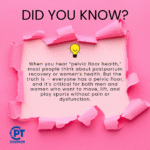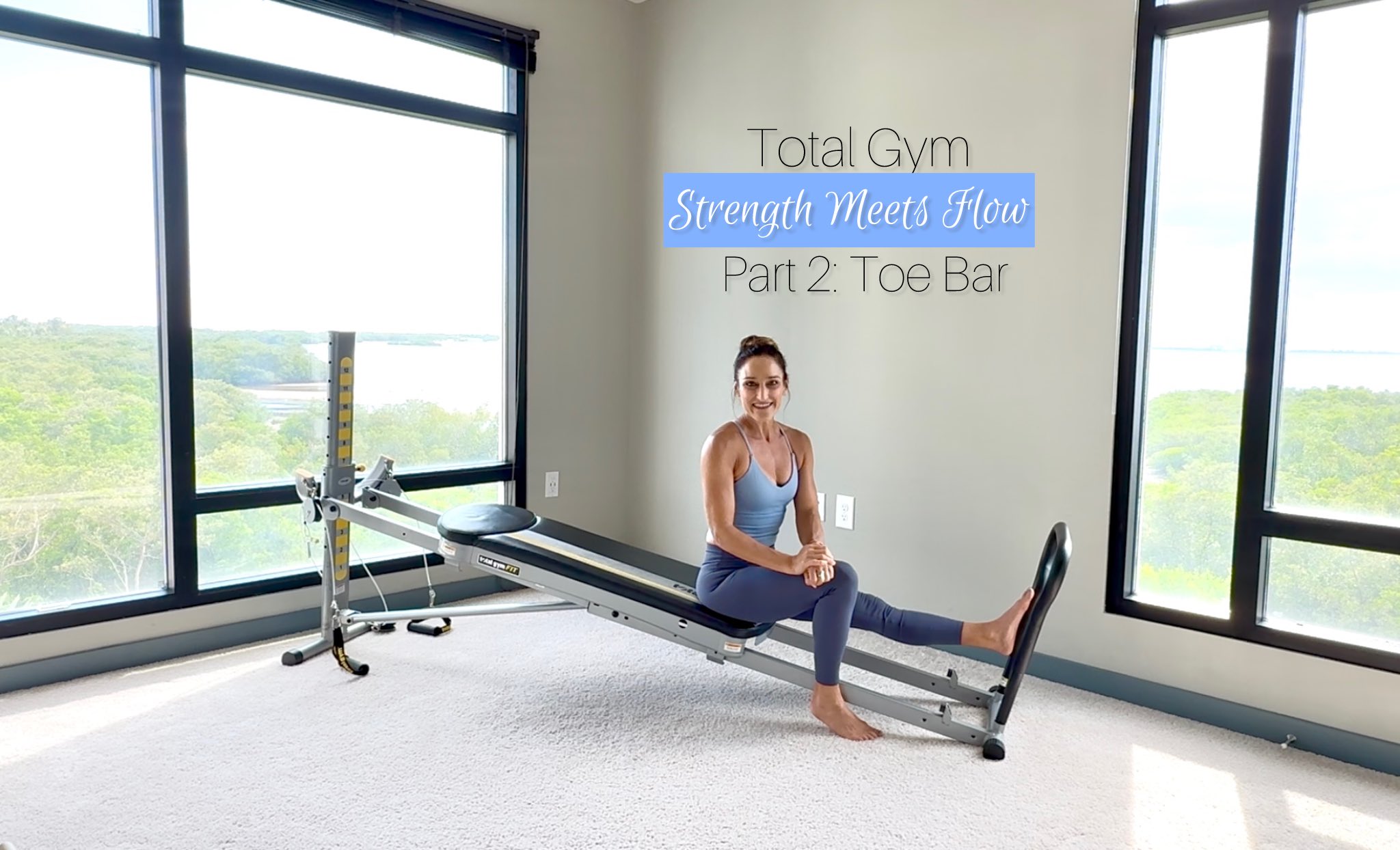October 7, 2025
I just got back from London, where I was interviewed on stage at the Health Optimisation Summit.
On the eight-hour flight over, I spent my time scribbling down some fresh biohacks and emerging trends I’ve been experimenting with lately—the kind that (A) actually move the needle on performance, health, longevity, and biomarkers, and (B) I haven’t really shared much about yet.
Want an insider glimpse of my notes?
Then keep reading, because I’ve got ten juicy bits for you.
1. The GLP-1 Revolution: Beyond Weight Loss to Metabolic Mastery
The story of glucagon-like peptide-1 (GLP-1) receptor agonists has been one of the most dramatic developments in metabolic health this year.
While most people know them as weight loss drugs, emerging research shows systemwide benefits well beyond the scale.
Recent studies have demonstrated significant benefits beyond appetite and glycemic control, including reduced major adverse cardiovascular events, with semaglutide showing a 26% lower risk of death from cardiovascular causes, nonfatal myocardial infarction, or nonfatal stroke, and a 20% reduction in major adverse cardiac events in patients with overweight or obesity.

GLP-1 medicines, beyond lowering blood sugar and body weight, provide broad protective effects across multiple systems, reducing risks of cardiovascular and kidney disease while also improving outcomes in conditions linked to obesity and metabolic dysfunction. It highlights their role in extending benefits beyond type 2 diabetes to heart failure, liver disease, sleep apnea, osteoarthritis, and peripheral artery disease. Check out the full study here.
The cardiovascular benefits are particularly compelling.
In March 2024, the FDA approved a label expansion for Wegovy to reduce the risk of cardiovascular death, heart attack, and stroke in adults with cardiovascular disease and obesity or overweight.
This represents a paradigm shift in how metabolic medications are viewed—not just as weight management tools, but as potential cardiovascular protective agents.
What makes GLP-1 receptor agonists particularly interesting is their multifaceted mechanism of action. They enhance insulin secretion and reduce glucagon levels, resulting in superior glycemic control compared to traditional type 2 diabetes therapies.
Additionally, their gastric emptying effects contribute to sustained satiety, naturally lowering caloric intake without the psychological struggle and metabolic rebound typically seen in restrictive dieting approaches.
The lipid profile improvements are equally impressive, with significant reductions in low-density lipoprotein (LDL) cholesterol and triglycerides that compound the cardiovascular benefits.
Perhaps most intriguingly, emerging research suggests potential benefits for non-alcoholic fatty liver disease (NAFLD) and diabetic kidney disease, indicating systemic metabolic optimization rather than targeted symptom management.
But here’s what is most important…
To avert problematic issues like gastrointestinal side effects, muscle loss, and nausea, you should consider microdosing (check out this podcast for more information), rather than using the standard GLP-1 doses.
I’m not a doctor, and this isn’t medical advice, but smaller doses of a GLP-1 agonist can still deliver impressive effects, something I first learned when I interviewed Dr. Tyna Moore (you can check out the full show here).
For example, I currently use a Monday, Wednesday, Friday dose of 0.25mg retatrutide, which is technically a triple-agonist that targets three pathways: glucagon, GLP-1, and gastric inhibitory polypeptide, injected three times a week, but since retatrutide is becoming harder to get, I will probably switch to 0.25mg tirzepatide soon (Peptual is my peptide source).
These small doses give me the metabolic effects of these impressive peptides, but not so much appetite suppression that I can’t do things like eat adequate protein and lift heavy weights.
2. Ketone Body Optimization: The D-BHB and L-BHB Configuration Revolution
The ketone body landscape has evolved way beyond fasting, carb restriction, and exogenous ketone supplementation.
The emerging research on specific beta-hydroxybutyrate (BHB) configurations—particularly the distinction between D-BHB and L-BHB ketones—has opened new frontiers in metabolic optimization and neuroprotection, and I’ve been sucking down BHB ketones like candy with incredible focus, appetite satiating, and performance results.
While they look pretty similar, almost like mirror images of each other, D-BHB is the metabolically active form of the ketone beta-hydroxybutyrate, while L-BHB is a less active, slower-metabolizing precursor.
In the body, D-BHB is more efficiently converted to adenosine triphosphate (ATP), whereas L-BHB serves primarily as a signaling molecule and is excreted in urine. Products containing a combination of D- and L-BHB, called “racemic mixtures,” can lead to a more sustained but lower ketone concentration compared to D-BHB alone.
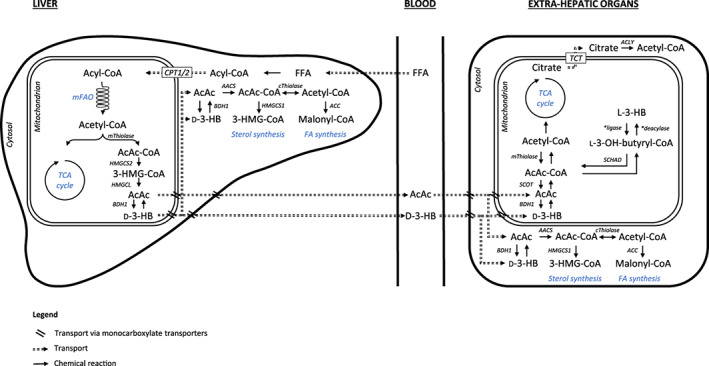
The figure illustrates how ketone bodies are produced and used: D-3-hydroxybutyrate (D-3-HB) is formed in the liver via the HMG-CoA pathway and oxidized in extrahepatic tissues to generate acetyl-CoA for the Krebs cycle, while L-3-hydroxybutyrate (L-3-HB), synthesized through less well-defined pathways, is imported into mitochondria, activated to L-3-hydroxybutyryl-CoA, and then metabolized to acetyl-CoA, with ketone bodies also serving as precursors for lipid and cholesterol synthesis. See the full study.
For example, a recent randomized, double-blind, placebo-controlled study showed that daily intake of D-BHB can promote weight loss, especially through fat reduction, but the benefits of D-BHB extend far beyond body composition.
Research also shows that D-BHB ketones increase glutamate-mediated stimulation of respiration compared to glucose, and enable stronger and more sustained uncoupled respiration, basically meaning enhanced mitochondrial function at the cellular level.
The neuroprotective effects of are also pretty compelling…
D-BHB’s ability to inhibit something called the “NLRP3 inflammasome” represents a direct anti-inflammatory mechanism that protects against neurodegenerative processes. This pathway could be crucial for cognitive longevity and may explain the cognitive enhancement many people, including me, report with therapeutic ketosis.
From a cardiovascular perspective, D-BHB supplementation consistently demonstrates improvements in LDL cholesterol profiles while reducing triglycerides and blood pressure. The oxidative stress reduction in cardiac cells suggests protective effects that could compound over time with consistent use.
Recent research shows that D-BHB supplementation is safe and well-tolerated, inducing a mild rise in blood ketones while suppressing lipolysis and reducing exercise-induced metabolic stress markers. This indicates potential applications for exercise recovery and metabolic flexibility enhancement.
The muscle preservation effects during caloric restriction represent another significant benefit, potentially allowing for more aggressive fat loss phases without the typical lean mass sacrifice. This makes ketone supplementation particularly valuable for body recomposition goals.
Fun fact: At the Health Optimisation Summit, I had the privilege of announcing from the stage the upcoming launch of the world’s first edible ketone bar—the Boundless Bar.
Each bar delivers a scientifically formulated dose of the most powerful ketone, D-BHB, designed to fuel the body and brain with clean, efficient energy. And because ketones are notoriously difficult to make palatable, we worked tirelessly to create indulgent flavors that truly taste incredible: Vanilla Cheesecake, Cinnamon Roll, Chocolate-Chip Cookie Dough, and (coming soon) Blueberry Pie.
The new ketone-packed Boundless Bars are now officially available here!
3. High-Dose Creatine: Redefining the Upper Limits of Supplementation
The landscape of creatine supplementation is shifting as new research highlights the benefits of higher dosing protocols that go beyond traditional guidelines.
For years, the standard approach has been 3–5 grams per day. However, mounting evidence suggests that significantly larger doses can deliver additional advantages across multiple physiological systems.
For example, a loading phase of 20–25 grams per day can rapidly saturate muscle creatine stores. This acceleration enhances ATP availability, leading to measurable improvements in strength, power output, and sprint performance—often by 5–15%.
Using higher doses of creatine could help you see results faster and unlock benefits beyond muscle performance. Research also shows that, when done short-term (30 g/day for 5–7 days), these protocols are generally well-tolerated. The side effects are usually minor (like temporary water retention or mild stomach discomfort).
The cognitive enhancement effects of higher-dose creatine are particularly intriguing, as well.
Dosing ranges of 8-20 grams daily have demonstrated improvements in working memory, processing speed, and mental clarity, especially under conditions of stress or sleep deprivation, suggesting that brain phosphocreatine stores may require higher systemic availability to achieve therapeutic levels.
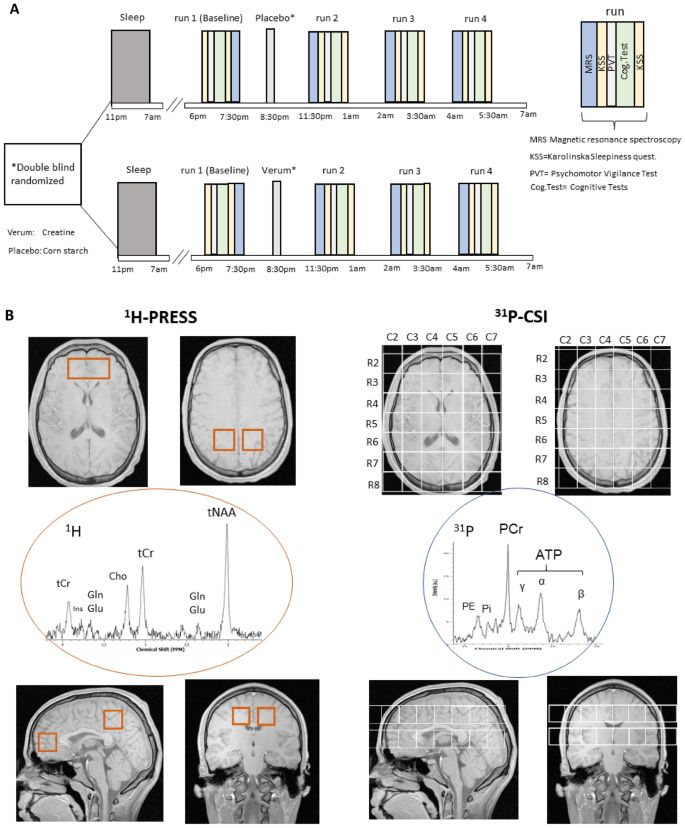
In this study, participants took either creatine or a placebo at 8:30 p.m. in two separate sessions spaced at least five days apart, with seven starting on creatine first and eight starting on placebo. Measurements were taken at 6 p.m. (before dosing) and then again at midnight, 2 a.m., and 4 a.m., each session lasting about 95 minutes and including brain scans, fatigue ratings, reaction-time tests, and other cognitive tasks. For the brain imaging, researchers used special spectroscopy scans: three small ¹H-MRS voxels and two ³¹P-MRS grids placed in different brain regions. These scans tracked energy-related signals like phosphocreatine (PCr), inorganic phosphate (Pi), ATP, total creatine, N-acetyl-aspartate (NAA), and neurotransmitters such as glutamate and glutamine. See the study here.
Neuroprotective applications represent an emerging frontier. The ability to elevate brain phosphocreatine levels through supplementation could protect against traumatic brain injury and may have applications in neurodegenerative disease prevention. The energy buffer effect in neural tissue could be particularly valuable for individuals engaged in contact sports or high-risk activities.
In addition, the bone health implications of high-dose creatine supplementation have been underappreciated.
Research indicates increased osteoblast activity and improvements in bone mineral density, particularly when combined with resistance training. This represents a dual-pathway approach to skeletal health that could be especially valuable for aging populations.
Interestingly, recent research has focused on the experimental use of intranasal creatine administration to deliver creatine to the brain (in animal models).
But I wouldn’t try it: intranasal creatine administered in a lab setting to a rodent is way different than snorting powdered creatine, which can cause severe respiratory irritation and inflammation.
The standard and safe method of creatine supplementation is oral ingestion. Even for that, if you go the high-dose creatine route, split it into doses of no more than 5g at a time and stay hydrated (unless you want to risk a surprise disaster in your pants).
4. Thoracic Mobility: The Foundation of Your Core Performance
In my own mobility program—which consists of 15–20 minutes of active stretching, foam rolling, and mobility each morning (demonstrated here)—thoracic spine mobility has emerged as one of the most underappreciated yet fundamental aspects of the way my body feels and performs all day.
The thoracic region serves as the cornerstone of proper movement patterns, respiratory efficiency, and neural function, making its optimization critical for anyone serious about peak performance.
 The postural implications of thoracic mobility extend far beyond just aesthetics. Proper thoracic extension and rotation directly influence cervical spine positioning, shoulder mechanics, and lumbar spine loading patterns. This creates a cascade effect where thoracic limitations manifest as pain and dysfunction throughout the kinetic chain.
The postural implications of thoracic mobility extend far beyond just aesthetics. Proper thoracic extension and rotation directly influence cervical spine positioning, shoulder mechanics, and lumbar spine loading patterns. This creates a cascade effect where thoracic limitations manifest as pain and dysfunction throughout the kinetic chain.
Respiratory function improvements may be the most immediately impactful benefit of enhanced thoracic mobility.
Increased rib cage flexibility allows for greater diaphragmatic excursion and enhanced lung expansion capacity. This translates to improved oxygen delivery, more efficient breathing patterns, and enhanced parasympathetic nervous system activation.
The athletic performance applications of good thoracic mobility are extensive, as well.
Sports requiring rotational power—golf, tennis, swimming—depend heavily on thoracic spine mobility for optimal force generation and transfer. Limited thoracic rotation forces compensatory movement patterns that reduce power output and increase injury risk.
Here are three good, easy-to-learn, thoracic mobility exercises that target the most common restriction patterns:
- Foam Roller Thoracic Extensions: Sit with your knees bent and a foam roller behind your mid-back. Lace your hands behind your head, keep your butt on the ground, and gently lean back over the roller. Hold for 10 seconds (you can follow this example).
- Quadruped Thoracic Rotation: From a crawl position on your hands and knees, place one hand behind your head and rotate your thoracic spine through a full range of motion (see this example to try it yourself).
- World’s Greatest Stretch Thoracic Opener: From a plank or modified plank, step your right foot forward outside your right hand. Lift your right hand, rotate your chest open, and reach toward the ceiling. Lower your hand back down and repeat. Switch sides and perform the same movement on the left (here is a good demonstration).
These simple moves target common restriction patterns while providing immediate feedback for proper execution and progression.
5. Pre-Workout Cold Plunge: Dr. Thomas Seager’s Protocol Revolution
The timing of cold exposure has been revolutionized by the work of Dr. Thomas Seager and others who have identified pre-workout cold plunging as potentially superior to post-workout protocols for specific adaptations.
This represents a fundamental shift in how you can utilize cold thermogenesis for performance optimization, and I was intrigued when Dr. Seager proposed to me on a recent podcast (you can check that out here) that I cold plunge pre-workout, which has also been mentioned to me a couple of years prior by author Brad Kearns.
Dr. Seager’s notes on pre-workout cold exposure (you can find his book here) have revealed remarkable testosterone production benefits, with documented increases of up to 400 points when cold exposure is followed by exercise. This hormonal optimization creates a compound effect via which a cold-induced stress response is amplified by subsequent physical activity.
The benefits of pre-workout cold exposure include:
I have a Morozko Forge cold plunge (designed by Dr. Seager) that I maintain at 34°F. Before I hit the gym in the morning, I now get in the plunge for 2–3 minutes pre-workout. It’s a game-changer—just make sure not to do any biomechanically complex exercises with heavy weights while you’re still shivering.
6. Molecular Hydrogen: Inhaling and Bathing
Molecular hydrogen therapy has emerged as one of the most promising therapeutic interventions, with experimental and clinical studies showing potential benefits for cardiovascular, respiratory, and metabolic disorders, as well as brain and nervous system disorders.
The unique properties of molecular hydrogen, as the smallest gas molecule, allow for unprecedented cellular penetration and systemic availability.
I’ve done multiple podcasts on molecular hydrogen, including:
- Is This Like Drinking HUNDREDS of Bottles Of Hydrogen In A Single Sitting? The Massive Antioxidant Benefits of *Inhaling* Hydrogen, With Dr. Tyler LeBaron & Alex Tarnava.
- Everything You Need To Know About How To Use Hydrogen Water: Timing, Dosing, Delivery Mechanisms, Hydrogen Tablets, Hydrogen Water Machines, Hydrogen Inhalers & Much More!
- Everything You Need To Know About Drinking HYDROGEN (Tablets vs. Bottles, When To Drink, How Hydrogen Works & Much More!) With Alex Tarnava
- The 30-Year-Old Scientist Phenom Who Runs a 2:30 Marathon, Deadlifts 420 Pounds & Drinks Hydrogen Enriched Water.
- The Electrolyte & Mineral Replenishment Strategy Closest To Human Plasma, How To “Bathe In Hydrogen,” Nasty Water Industry Myths & Truths & Much More With Robert Slovak.
The Benefits of Molecular Hydrogen
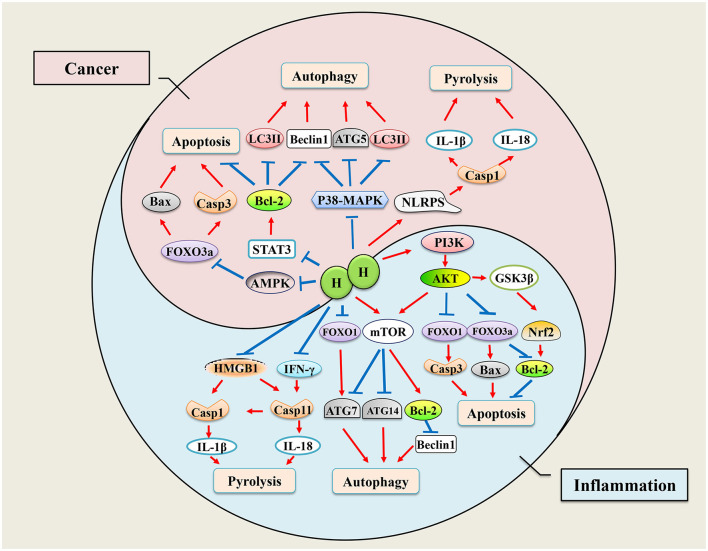
Hydrogen regulates cell death through bidirectional effects on apoptosis, autophagy, and pyroptosis, reducing excessive programmed cell death during inflammation while promoting these processes to exert antitumor effects. Here is the full study.
The antioxidant mechanisms of molecular hydrogen are particularly intriguing…
Since the 2007 discovery that molecular hydrogen has selective antioxidant properties, multiple studies have shown beneficial effects in diverse animal models and human disease. Unlike broad-spectrum antioxidants that can interfere with beneficial oxidative processes, hydrogen selectively neutralizes harmful reactive oxygen species while preserving essential cellular signaling.
A 2024 review found that hydrogen water showed promise in reducing fatigue and increasing endurance, indicating direct performance benefits beyond therapeutic applications. The anti-inflammatory effects occur through multiple pathways, including cytokine modulation and inflammasome inhibition.
New inhalation protocols with molecular hydrogen—like those I discuss in this podcast with Dr. Tyler LeBaron and Alex Tarnava—deliver rapid systemic hydrogen with near-immediate bioavailability at high yet safe doses.
The ability to achieve therapeutic tissue concentrations within minutes of inhalation makes this delivery method particularly attractive for acute applications or pre-activity optimization. I now use the Inhale H2 machine that Tyler and Alex designed—simply breathing H2 through a face mask for 30-60 minutes while I’m reading, meditating, or napping.
Bathing in hydrogen-rich water (you can check out more information here) is another novel delivery mechanism that offers unique transdermal absorption opportunities.
The skin’s barrier function allows selective hydrogen penetration while maintaining protective properties. This delivery method provides sustained exposure and can be particularly beneficial for inflammatory skin conditions.
For this, I’ve been using the hydrogen bath setup developed by Lumati, and about four times a week, I catch up on books, reading, podcasts, and even emails while I’m submerged in a transdermal hydrogen bath.
By the way, even though I now inhale and bathe with hydrogen, I still take it orally in the morning by dropping a few hydrogen tabs in my giant morning steel jug of water.
7. Light and Sound Therapy: Consciousness Hacking Through Audio-Visual Entrainment
 Light-sound therapy, AKA “audio-visual entrainment (AVE) devices,” can reliably induce specific brainwave states and some pretty impressive physiological changes that somewhat simulate a psychedelic or entheogenic experience (think magic mushrooms or LSD-like states), but drug-free.
Light-sound therapy, AKA “audio-visual entrainment (AVE) devices,” can reliably induce specific brainwave states and some pretty impressive physiological changes that somewhat simulate a psychedelic or entheogenic experience (think magic mushrooms or LSD-like states), but drug-free.
At home, I use a device called the “roXiva” (podcast here), and when I travel, the “NeuroVIZR” as forms of consciousness optimization technology without the biochemical cost (and arguably depending on dosage, the spiritual cost) of plant medicines.
You can check out my thoughts on plant medicines below:
These brainwave entrainment devices operate through something called a “frequency-following response,” in which external rhythmic stimuli guide neural oscillations toward target frequencies. This allows for precise control over states of consciousness and can facilitate access to beneficial brainwave patterns that might otherwise require getting really high on drugs or years of meditation practice.
For example, theta state induction (4-8 Hz) through light-sound therapy can create optimal conditions for deep relaxation, emotional processing, and creative visualization. The ability to reliably access theta states has profound implications for stress management, trauma processing, and creative problem-solving.
In addition, alpha frequency stimulation (8-12 Hz) enhances focus, cognitive function, and mental clarity. This represents a non-pharmaceutical approach to cognitive enhancement that can be precisely calibrated to your needs and preferences.
Sleep optimization applications utilize delta frequency targeting (0.5-4 Hz) to promote deeper, more restorative sleep patterns. Regular use of delta-targeting protocols could help regulate circadian rhythms and improve sleep quality without pharmaceutical intervention.
Even pain management applications with light-sound therapy have shown impressive results, with some studies indicating up to 76% reduction in chronic pain symptoms. The mechanisms likely involve disruption of pain signaling

pathways and activation of endogenous pain modulation systems.
The “sober psychedelic” experiences produced by these systems provide access to altered states of consciousness without pharmaceutical intervention. This creates opportunities for personal exploration, new thought patterns, and so-called “consciousness expansion” within a controlled and safe environment.
At home, I use my roXiva lamp for 20–60 minutes on afternoons when I need deep relaxation, or for quick 5–10 minute sessions to spark creativity and focus. An 11-minute session on a NeuroVIZR works incredibly when I’m traveling and need to duck out during a busy conference or work day.
If you haven’t messed around with light-sound therapy yet, and you want a drug-free, fast mental state shift, I definitely recommend trying it.
8. Carbon Dioxide Therapy: Optimizing a Misunderstood Gas

Anders Olsson uses the CardiHaler to optimize athletic abilities and performance.
Carbon dioxide therapy represents one of the most overlooked yet potentially powerful interventions in a biohacking arsenal
While CO2 is typically viewed as a waste product, therapeutic applications utilize its profound physiological effects on oxygen delivery, circulation, and nervous system function.
I was first introduced to this therapy when I interviewed Anders Olsson (you can check out that show here) about the multitude of benefits of CO2 therapy, and have been using his CardiHaler device at my desk for several months, which consists of a quick 5-10 minute burst of breathing 5–7% CO2 while I’m checking emails or writing.
The “Bohr Effect” mechanism is central to CO2 therapy’s benefits. Controlled increases in CO2 levels enhance hemoglobin’s ability to release oxygen to tissues, effectively improving cellular oxygenation despite unchanged oxygen saturation levels. This creates a pathway to enhanced cellular energy production and metabolic optimization.
Vasodilation effects occur through CO2’s direct action on smooth muscle in blood vessel walls. This natural mechanism provides enhanced circulation to muscles, brain, and organs without pharmaceutical intervention. The improved microcirculation has implications for recovery, cognitive function, and cardiovascular health.
The nervous system modulation effects of therapeutic CO2 exposure include activation of parasympathetic pathways and improvement in heart rate variability. This can create a natural stress reduction response that can complement other relaxation and recovery protocols.
Athletic performance applications leverage both the improved oxygen delivery and enhanced circulation to boost endurance and accelerate recovery.
The combination of better cellular oxygenation and enhanced waste product removal creates optimal conditions for sustained high-intensity performance, so this is also something you can mess around with pre-workout.
Cognitive benefits also occur through increased cerebral blood flow, with research showing up to 54.5% increases with controlled CO2 exposure. This enhanced brain circulation translates to improved mental clarity, focus, and cognitive processing speed.
9. Plasma Replacement Therapy: Cellular Rejuvenation Through Young Blood Factors
Plasma replacement therapy (which is significantly different from therapeutic plasma exchange, or TPE) represents a frontier of regenerative medicine, utilizing the concentrated regenerative factors found in young plasma to reverse aging processes and restore cellular function.
This intervention targets the fundamental mechanisms of aging at the systemic level, and compared to all the gene therapies, blood filtrations, stem cells, and other fancy protocols I’ve done, it is probably the biggest game-changer I’ve ever experienced for feeling like I’ve wound back the clock to eighteen years old.
I did a whole podcast about my experience wth plasma replacement therapy at Austin Regenerative Therapy (you can listen to it here), but the basic science is this: small extracellular vesicles (sEVs) and exosomes in young plasma carry specific microRNAs that directly stimulate mitochondrial biogenesis and enhance cellular energy production. These signaling molecules can restore youthful cellular function by activating pathways that become suppressed with aging.
The growth factors present in young plasma can provide a direct stimulus for tissue repair and regeneration. Unlike synthetic growth factors, plasma-derived factors work synergistically and include cofactors necessary for optimal biological activity.

Young blood has been shown to reduce aging-related symptoms, support cell growth and repair, limit chronic inflammation and fibrosis, and even reverse age-related gene expression across 51 cell types from 20 major organs and tissues in older animals. Review the study here.
Cytokine modulation through young plasma therapy helps restore balance to inflammatory pathways that become dysregulated with aging. This creates a systemic anti-inflammatory environment that supports tissue maintenance and repair processes.
The signaling molecules in young plasma also facilitate improved cell-to-cell communication, which deteriorates with aging and contributes to loss of tissue coordination and function. Restoration of these communication pathways could have profound implications for systemic rejuvenation.
You probably saw Bryan Johnson (you can check out our show together here) doing this therapy in his documentary, Don’t Die.
While I didn’t use my own son’s plasma, my experience at Austin Regenerative Therapy involved two days of getting 18—25-year-old healthy male donor plasma infused into my body via ten IV bags.
I realize that a protocol like this sounds like the domain of extreme biohackers and longevity-seeking billionaires, but as I mentioned, it’s probably the most notable biohack I’ve ever tried in terms of how I immediately looked, felt, and performed. The results have included ongoing muscle gain (I was 185 pounds when I did the procedure and am now 202 pounds, with no change in body fat) and a transformation in my skin appearance that has led countless people to ask about my “new skincare” protocol.
But I haven’t done anything different, except for the young plasma therapy…
From what I understand, Texas is the only state where this procedure is even legal, so if you want to do it, then you can contact Austin Regenerative Therapy.
10. Prayer: The Ultimate “Biohack” for Nervous System Optimization
Prayer creates measurable changes in nervous system function and overall physiology.
 For example, prayer naturally reduces respiration rate and increases exhalation duration, creating an optimal breathing pattern for parasympathetic nervous system activation. This surprised me to learn, but this change in breath pattern occurs automatically without conscious breathing control.
For example, prayer naturally reduces respiration rate and increases exhalation duration, creating an optimal breathing pattern for parasympathetic nervous system activation. This surprised me to learn, but this change in breath pattern occurs automatically without conscious breathing control.
In a podcast interview with Dr. Andrew Huberman (you can listen to it here), Dr. David DeSteno described that vagal tone improvements during prayer cause enhanced parasympathetic “rest-and-digest” function and improved autonomic balance.
Higher vagal tone is associated with better stress resilience, improved heart rate variability, and enhanced recovery capacity.
The cortisol reduction effects of prayer provide direct stress hormone optimization. A regular prayer practice has been shown to help maintain healthier baseline cortisol levels and improve your body’s stress response patterns over time.
The psychological safety signal generated by prayer practice signals to your brain that the environment is secure, even when praying about stressful situations. This creates a unique opportunity to process challenging experiences within a physiologically calm state.
Of course, the most obvious reason this occurs is because you’re casting your cares and worries upon a higher power (God) and deeply realizing that you aren’t having to fight on your own, whatever battle you’re fighting.
Cardiovascular benefits of prayer include reduced heart rate and blood pressure that occur during prayer, indicating actual physiological relaxation rather than merely psychological comfort. These effects seem to contribute to long-term cardiovascular health when prayer is practiced regularly.
Of course, the accessibility of prayer makes it one of the most practical strategies available. No equipment, special training, or financial investment is required, yet the physiological benefits rival those of many of the more sophisticated technological interventions I’ve described in this article.
Not sure where to start?
My approach is simple: besides prayers of gratitude before each meal, a morning family prayer meeting during our daily family huddle, and constantly talking to God throughout the day (particularly during stressful situations or before big decisions), I personally have a Notes app on my iPhone where I keep a different prayer that I pray each morning of the week.
I’ve developed many of these prayers through inspiration from author John Eldredge, whom I interviewed here, and who also has a good list of prayers at the Wild At Heart website prayer list page.
Integration and Implementation—Building Your Personal Biohacking Protocol
The true power of these interventions doesn’t necessarily lie in their individual application but in their synergistic integration as potential “stacks” you can weave into a day or week.
When you combine the right tools, you don’t just get incremental gains—you create a synergy that amplifies energy, recovery, resilience, and longevity.

Here are some powerful examples of how these stacks can be built:
-
Metabolic Optimization Stack: Start with GLP-1 support to upgrade systemic metabolic function, add ketone supplementation to fuel neurological and cardiovascular performance, and layer in high-dose creatine to maximize cellular energy output. This combination addresses multiple aspects of metabolic health simultaneously.
-
Recovery and Adaptation Protocol: Integrate pre-workout cold plunging for hormonal optimization, molecular hydrogen therapy for oxidative stress management, and thoracic mobility work for movement quality enhancement to create a comprehensive approach to training adaptation and recovery.
-
Consciousness and Stress Strategy: Blend light and sound therapy to dial in brainwave states, add CO₂ training to stabilize your nervous system, and finish with prayer or meditation to anchor psychological resilience. This is where cutting-edge tech meets ancient wisdom, creating a powerful toolkit for stress mastery.
-
Regenerative Longevity Approach: Use hydrogen, delivered transdermally or through inhalation, for deep cellular rejuvenation, combine it with plasma replacement therapy for a systemic “oil change,” and reinforce it with thoracic mobility practices to maintain long-term function. This stack isn’t about slowing aging—it’s about rewiring your biology for longevity.
Of course, 2025 is far from over…
I’m sure that through books, podcast guests, conferences, and my continued focus on immersive journalism, research, and self-guinea-pigging, I’ll discover plenty more biohacks to share with you.
But in the meantime, feel free to leave your comments below. I’m curious: which of these game-changing approaches will you implement first, and which do you have questions about?


